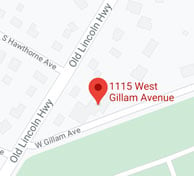Are you having thermostat troubles?! When your HVAC unit fails to respond to its thermostat, it can lead to discomfort and inconvenience. Let's take a closer look at some common reasons why your HVAC system might not be responding to its thermostat and what steps you can take to troubleshoot the issue.
5 Common Reasons Why Your Thermostat Is Not Responding & How to Fix It
1. Loose wiring
Problem: One of the primary reasons for a malfunctioning HVAC system is loose wiring. Over time, the electrical connections within your HVAC unit can become loose due to vibrations or general wear and tear. When this happens, the communication between the thermostat and the HVAC unit can be disrupted, resulting in a lack of response.
Solution: Inspect the wiring connections between the thermostat and the HVAC unit. Ensure that all wires are securely connected. If you notice any loose connections, tighten them carefully. However, if you're not comfortable working with electrical components, it's best to seek a professional.
2. Dirty air filter
Problem: A dirty air filter can restrict airflow, causing your HVAC system to work harder to maintain the desired temperature. In some cases, this can lead to the system not responding properly to the thermostat's commands.
Solution: Check the air filter in your HVAC system and replace it if it's dirty. Ideally, air filters should be replaced every one to three months, depending on usage and the type of filter. A clean air filter will improve airflow and help your HVAC system function more efficiently.
3. Thermostat location
Problem: The location of your thermostat can also affect its performance. If the thermostat is located near heat sources, drafts, or in direct sunlight, it may not accurately measure the temperature within your home, leading to incorrect temperature readings and HVAC system malfunctions.
Solution: Reposition your thermostat to a more suitable location within your home. Ideally, it should be placed away from heat sources, drafts, and direct sunlight. A central location on an interior wall is typically the best option for accurate temperature readings.
4. Limit switch issue (furnace)
Problem: The limit switch in your HVAC system is designed to shut off the furnace if it detects overheating. However, if the limit switch is faulty or malfunctioning, it may prevent the HVAC unit from responding to the thermostat.
Solution: Inspect the limit switch for any signs of damage or malfunction. If you suspect a problem with the limit switch, it's best to contact a qualified HVAC technician to diagnose and repair the issue.
5. Faulty blower motor
Problem: The blower motor in your HVAC system is responsible for circulating air throughout your home. If the blower motor is faulty or malfunctioning, it may prevent the HVAC unit from responding to the thermostat's commands.
Solution: Listen for any unusual noises coming from your HVAC system, as this could indicate a problem with the blower motor. If you suspect a fault with the blower motor, it's essential to contact a professional HVAC technician for diagnosis and repair.
Conclusion
When your HVAC unit fails to respond to its thermostat, it can be frustrating and inconvenient. However, by troubleshooting common issues such as loose wiring, dirty air filters, thermostat location, limit switch problems, and faulty blower motors, you can often resolve the issue and restore comfort to your home. If you're unable to diagnose or repair the problem on your own, don't hesitate to seek assistance from a qualified HVAC technician.
If you live in the Delaware Valley/Greater Philadelphia area and would like to find comfort within your home, visit our website or give us a call at 215 - 245 - 3200 to learn more.







